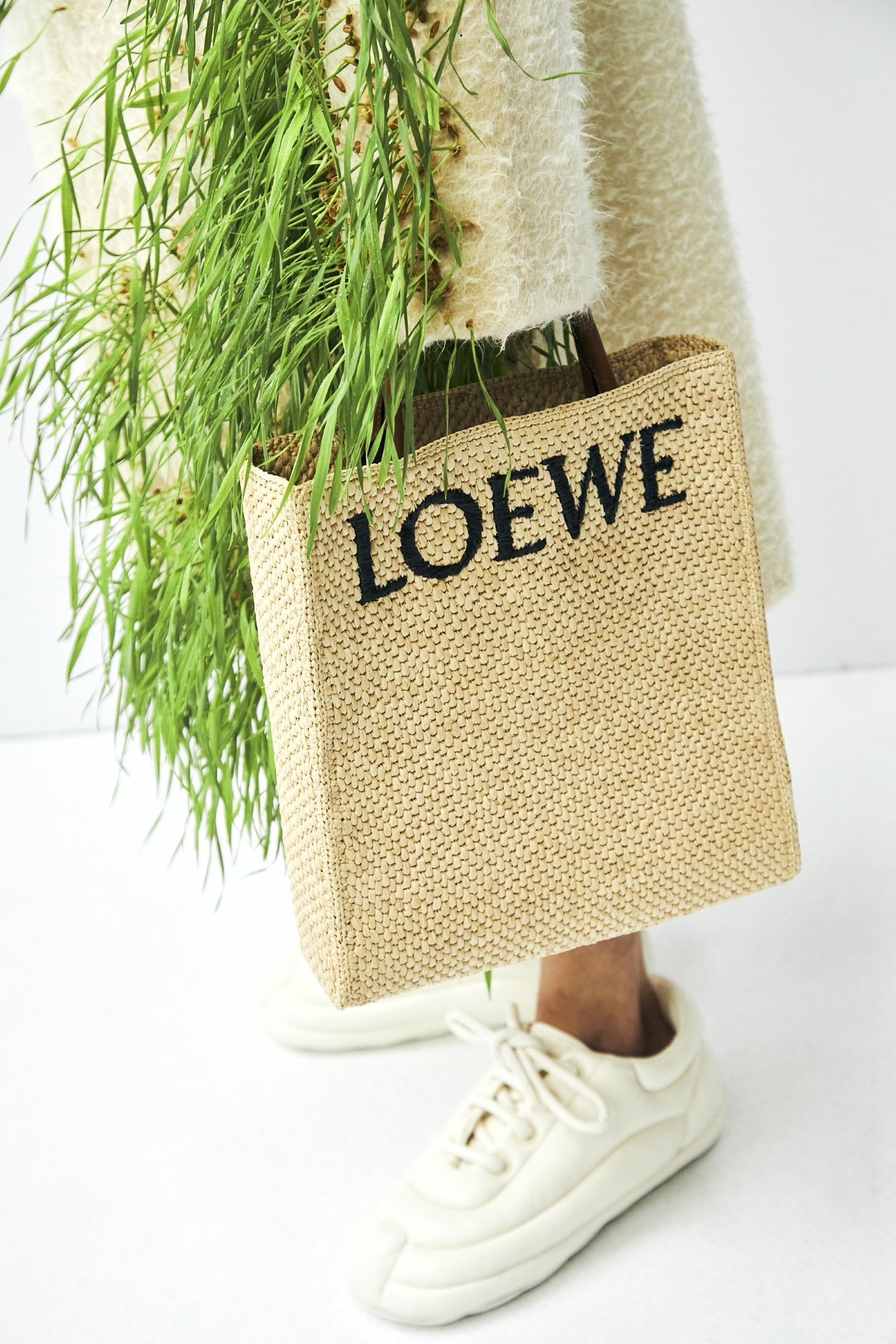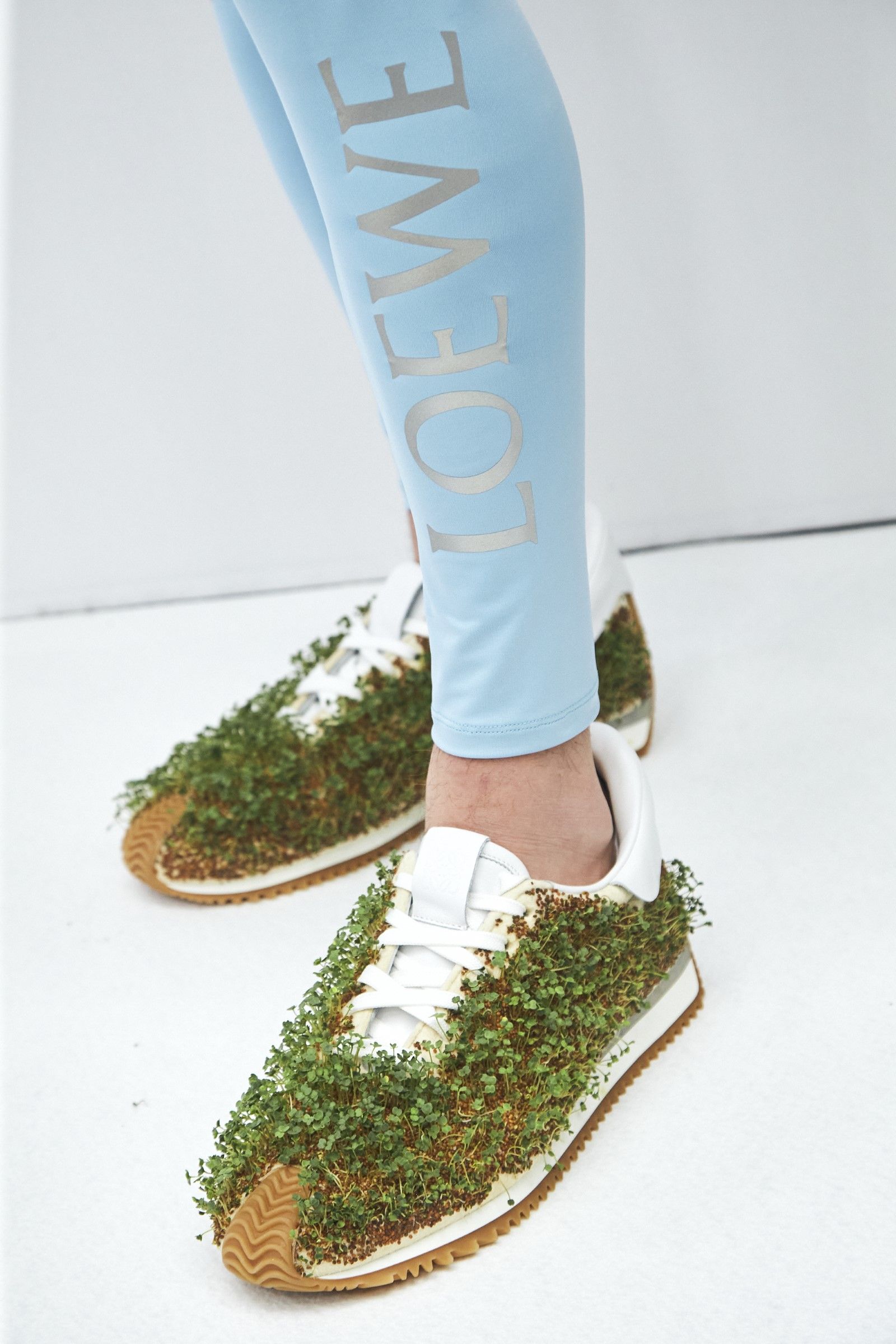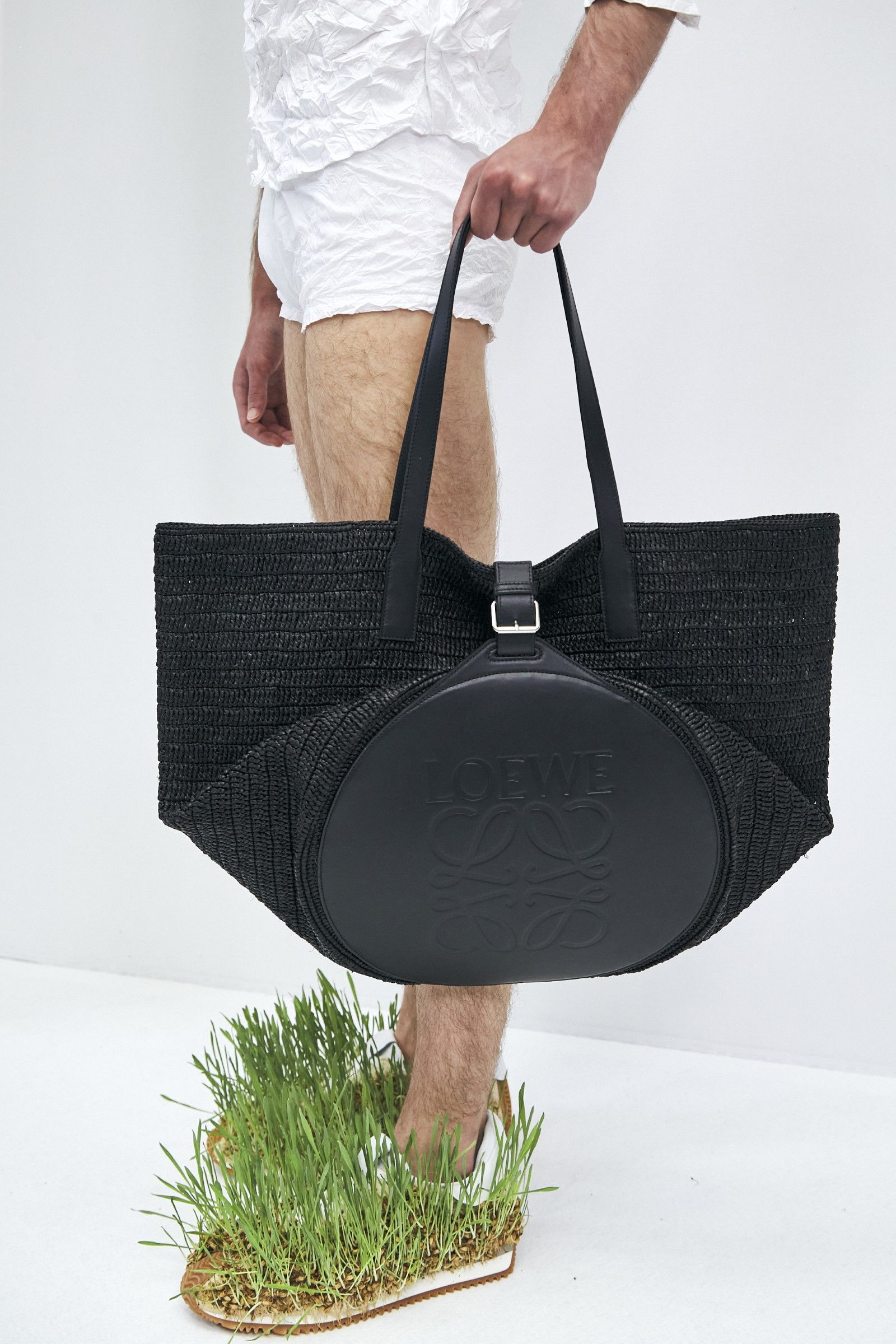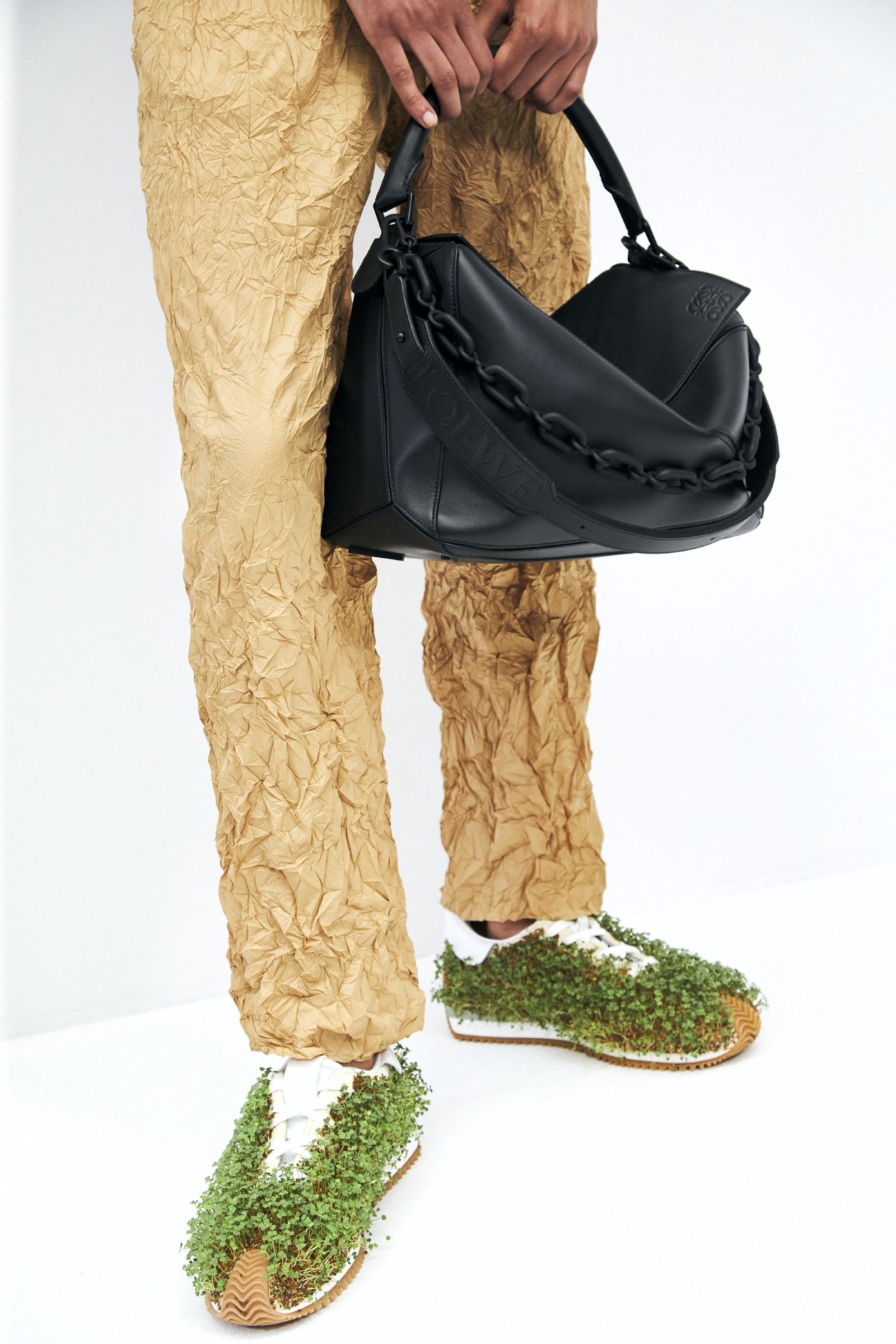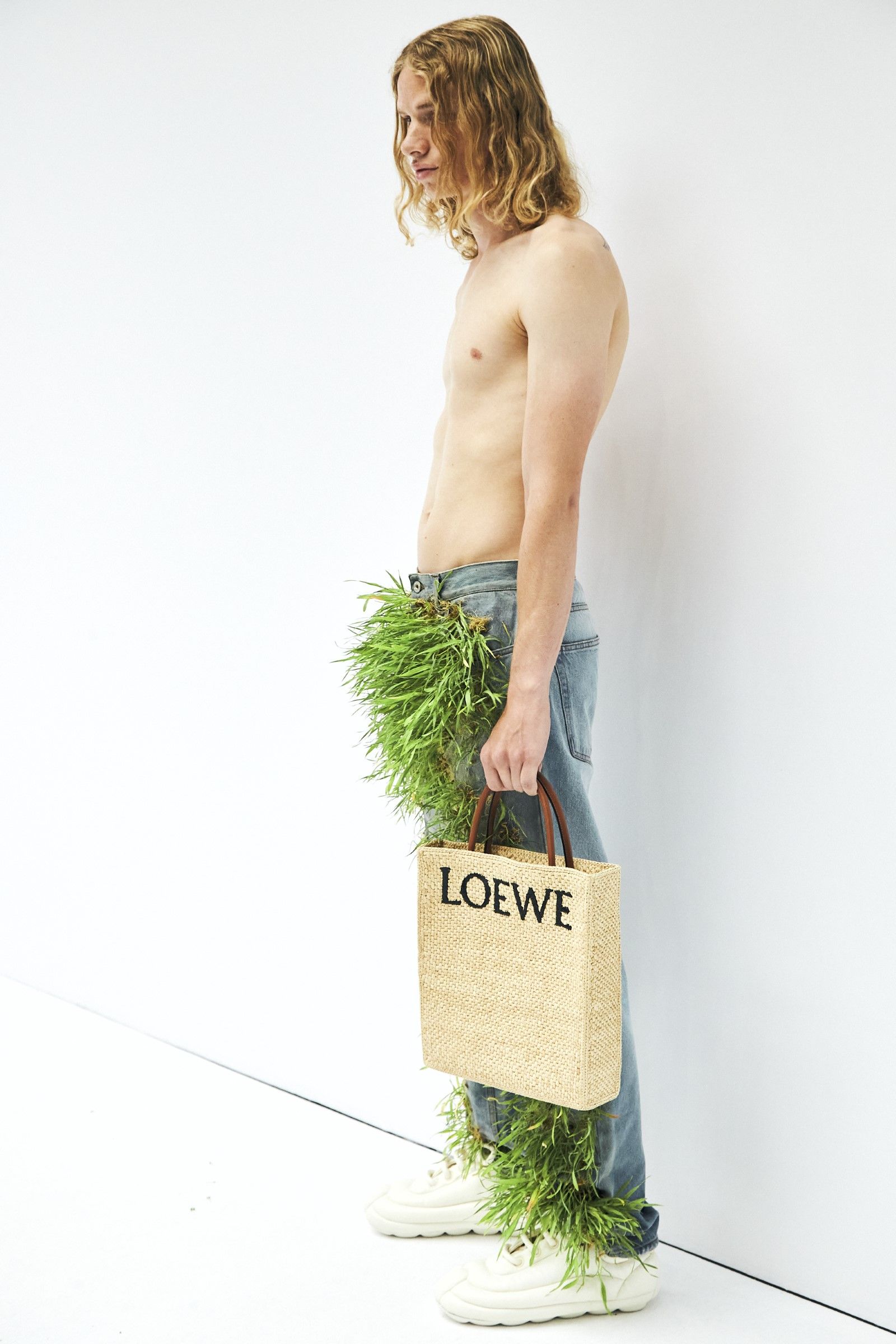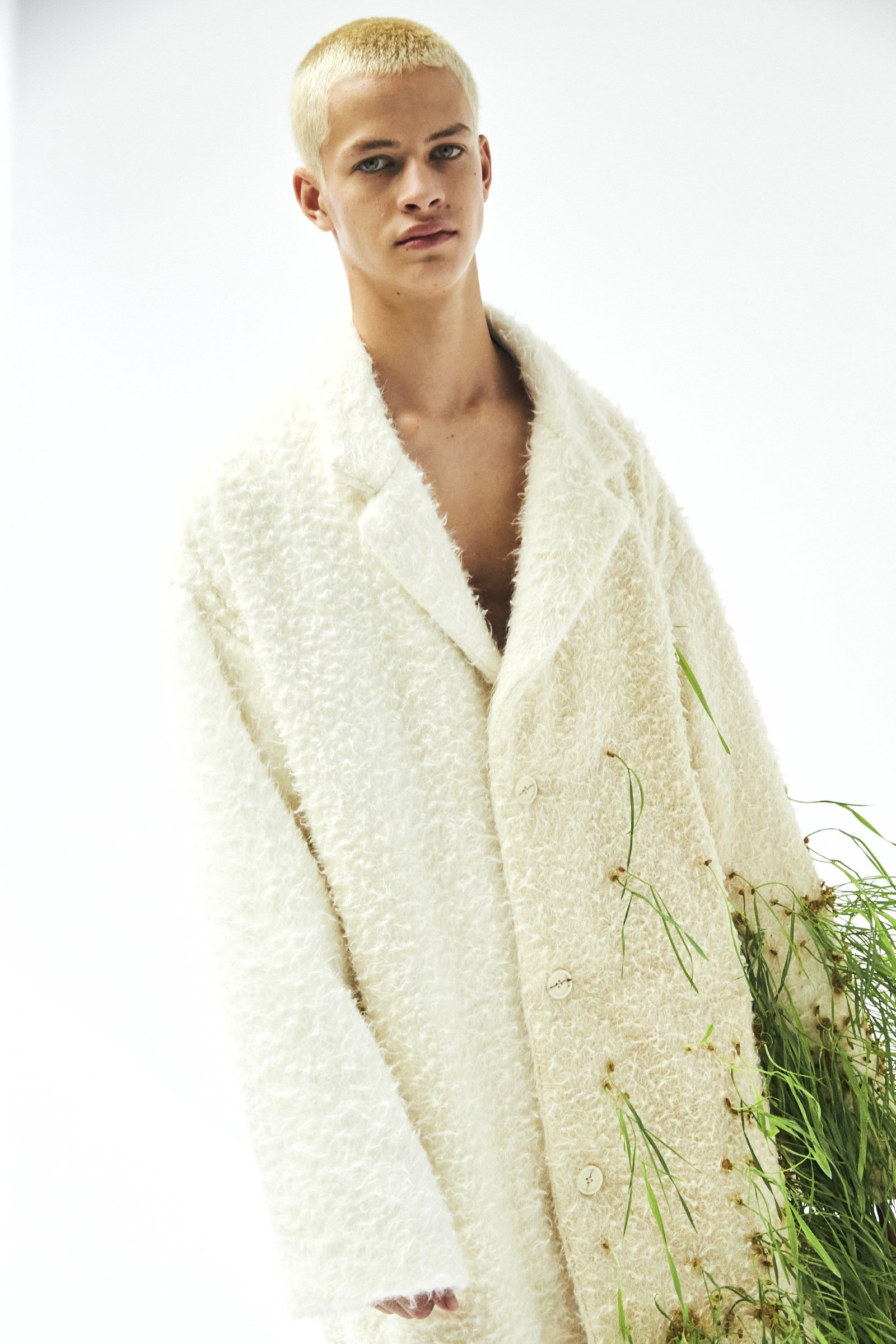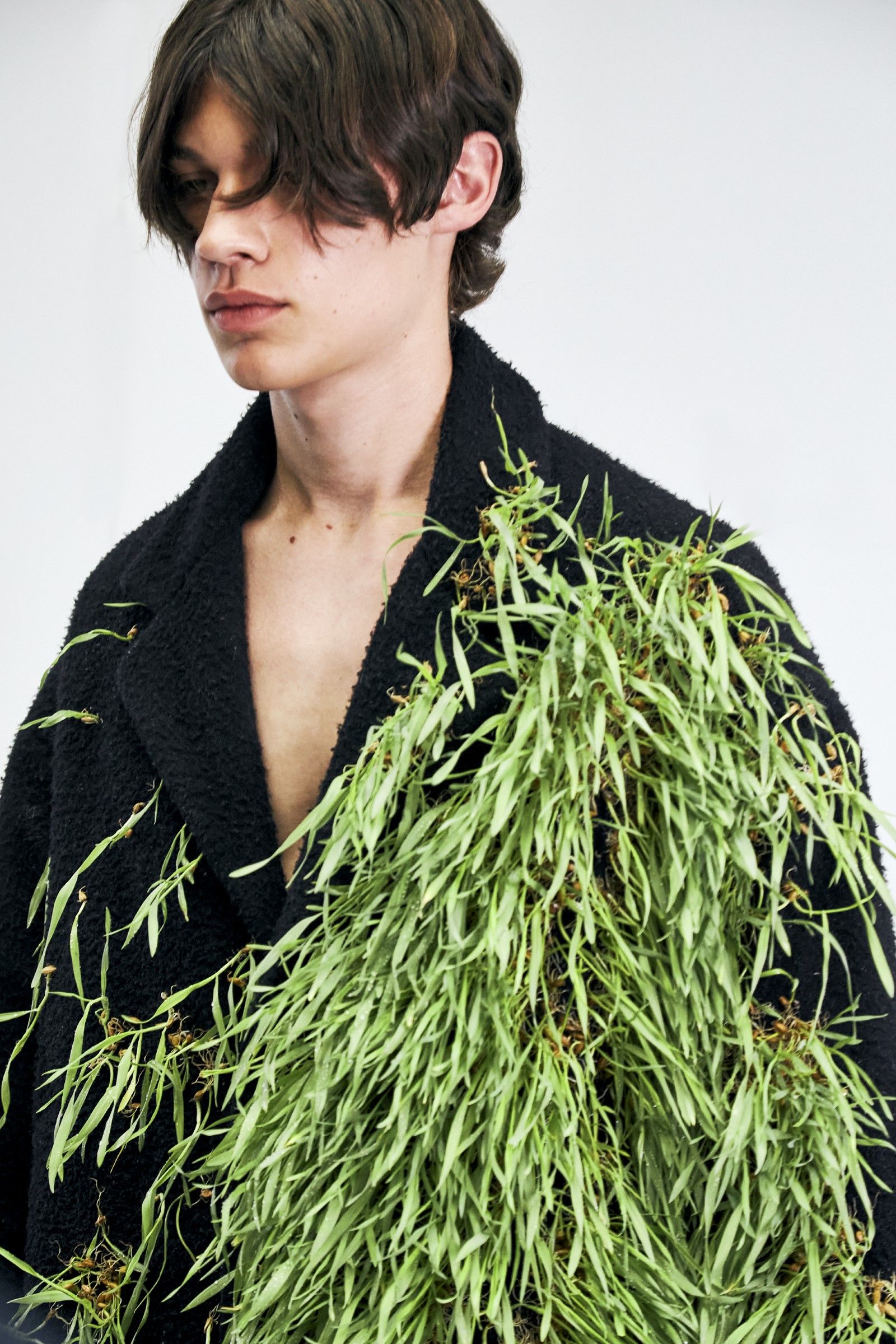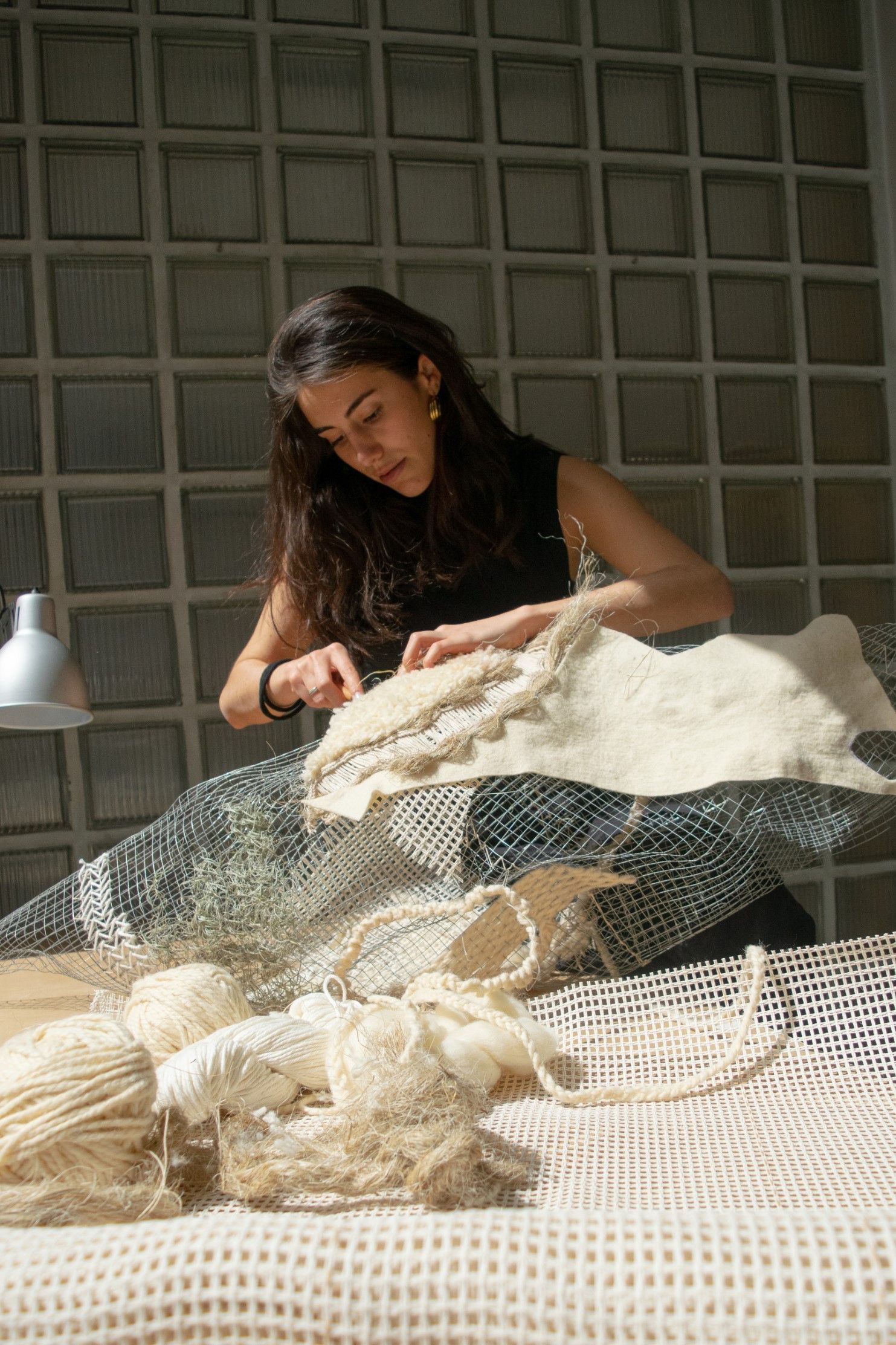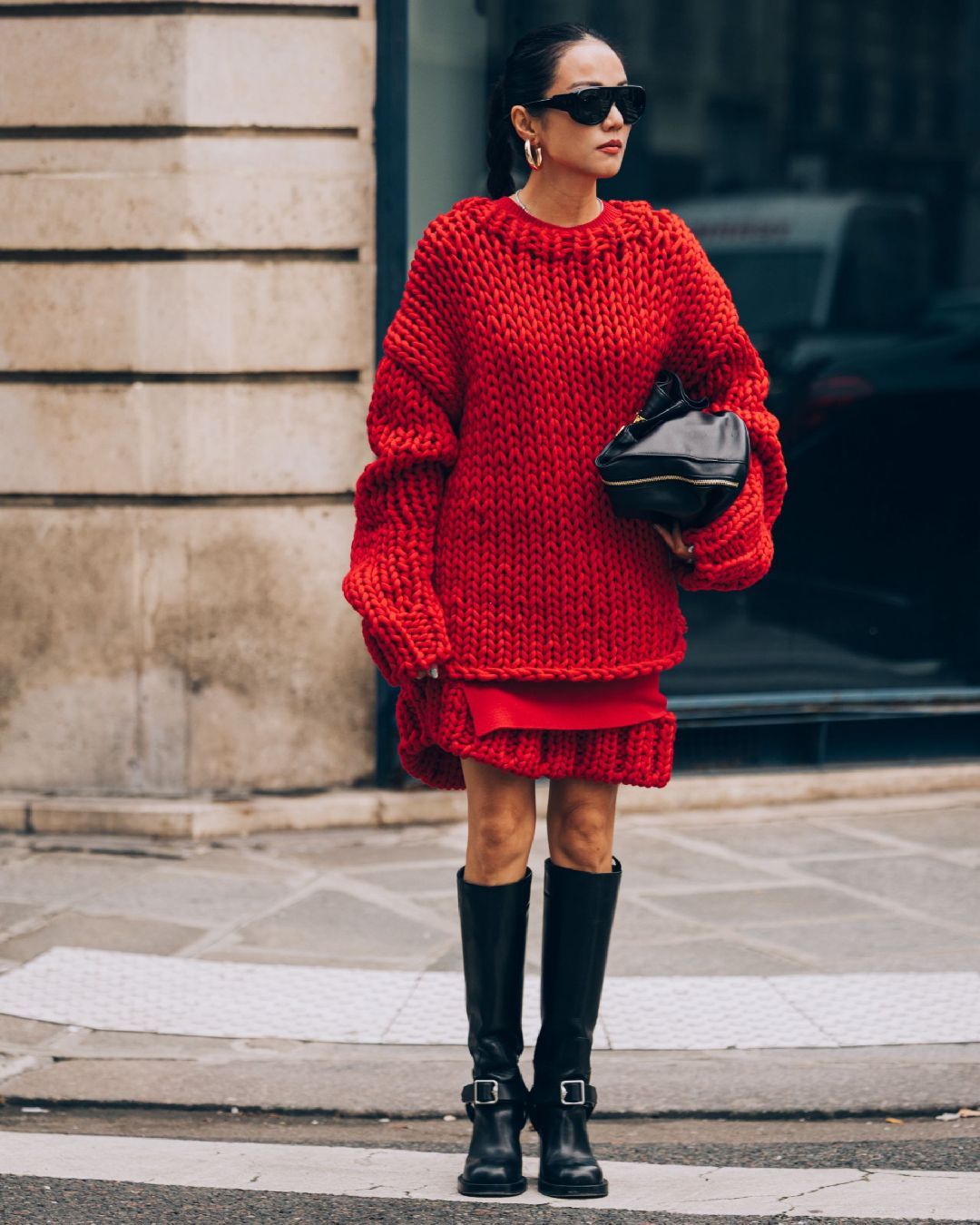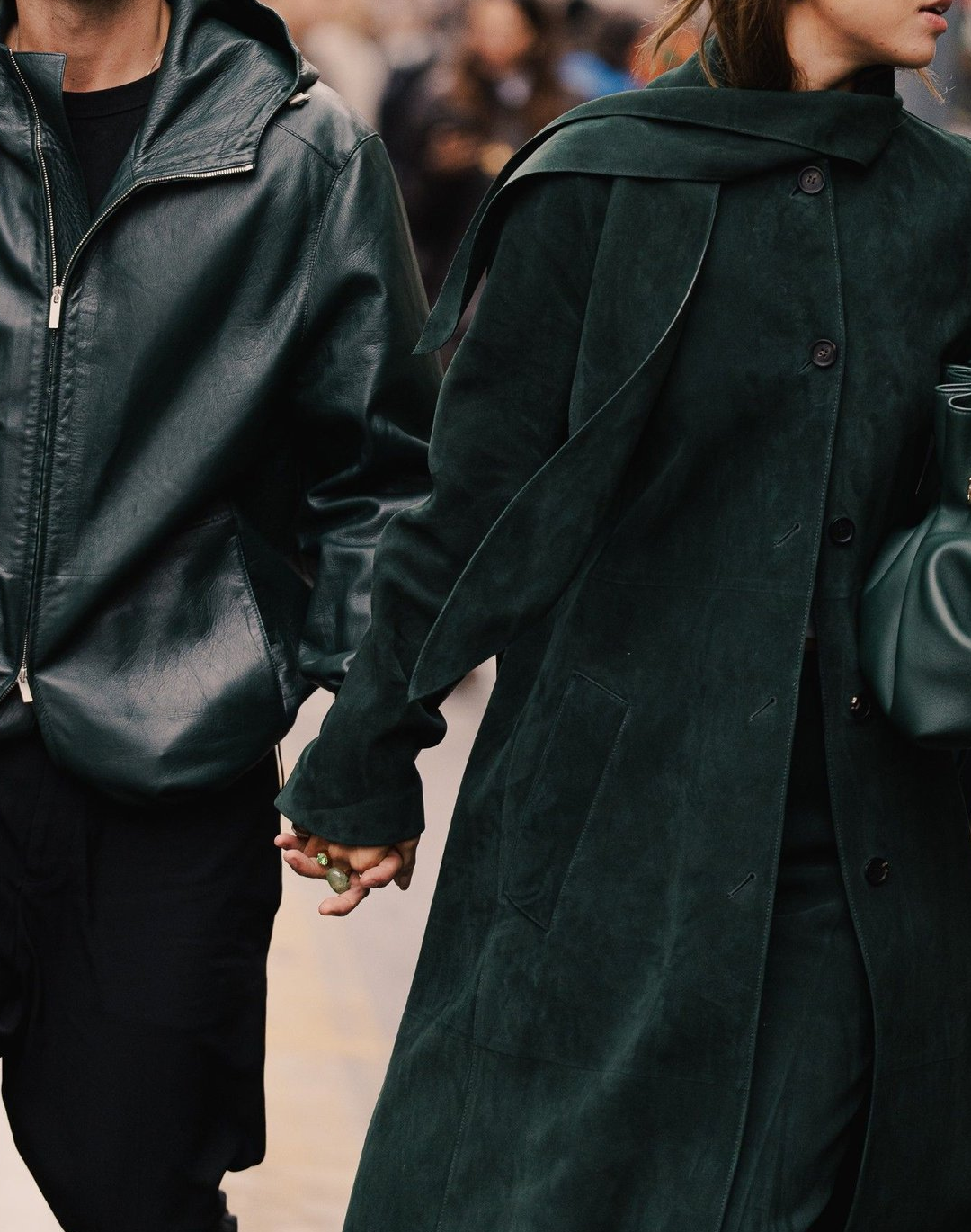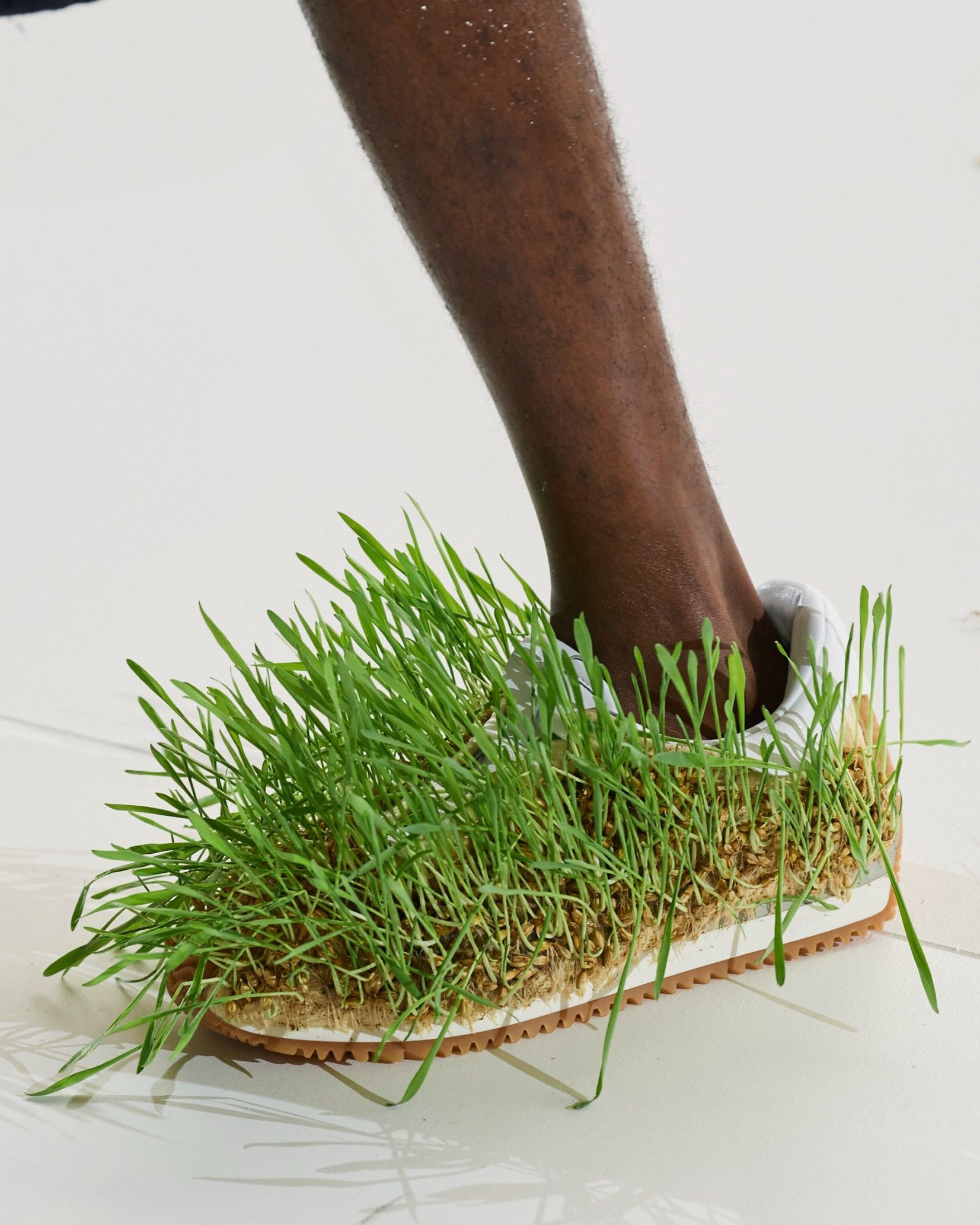
How do you grow grass on Loewe sneakers? According to designer Paula Ulargui Escalona, with extreme patience and the right doses of water
«As I grow the plants I take so much care – they are delicate but nature is much stronger than we think», Paula Ulargui Escalona tells me from her home in Madrid, where she resides. Paula is the designer behind the grass- and vegetation-covered dresses seen at Loewe's last show in Paris - a collaboration that brought her and her research to the forefront of the international public eye. «I developed this technique during my last year in university», told me Paula, who is a IED alumnus and spent part of her studies in Milan. «I did a whole project based on creating garments out of nature. I grew plants, I grew mushrooms. And I discovered a technique to wave plants to make actual fabric for a garment that is completely alive and made out of vegetation». The results of this project, which of course over time has branched out and enriched with new variations and experiments can be seen on Paula's website, which was also the point of contact between her and Loewe during the development stages of the collection. «What they were looking for was to express nature during a show, to show this message about the contradiction between technology and nature, and going back to it», says Paula. «. In the beginning they were developing materials that looked like living plants – but it was just normal fabric […]. I started to send them files and experiments so Jonathan would actually see them and choose the one he liked. I kept throwing ideas at them until we decided which plants to use and how».
Oddly enough, beyond the lengthy experimentation and search for the right plants to use, the process of cultivation itself came about quite naturally. «I just follow the thing that I need. I need natural fabrics, good quality, no chemicals. My requests weren’t so weird». Although, for sneakers that have attracted so much press attention, the Loewe team had to develop something new: «The roots of the grass were growing inside the material – but it was not leather. This material was very good for the plants to grow in, they had all the humidity and temperature that they needed». It is clear that there is a very advanced degree of research behind Paula's work. The first result of her research had been the creation of a tissue that consisted in its entirety of living plants while at a later stage came the tissues on which they grew: «I define myself an artist above all things, I’m a fashion designer and I work in sustainability. Even though my projects have a scientific side, their main purpose is to create an art piece that will spread my message. The technique requires a lot of handwork, delicate work».
Of course, the research will not stop there: at the moment Paula is working with Inditex (and thus with Zara) on the sourcing of sustainable textile materials. Paula does not believe that a vocation for sustainability and her own role within a fast fashion giant are contradictory - after all, real change must come from the top and from within: «Before entering in Inditex I was in a company that focused on sustainable brands and also in a lab experimenting with different materials. When they offered the job to me obvioulsy there was a moment where I was hesitant – but they’re doing so much. The challenge is there and they have a lot power to make this change and they work very hard for it». In addition to work for companies and more artistic collaborations such as the one with Loewe, there is also another, more scientific focus for Paula and that involves research into zero-impact materials that can be used on a large scale: «The purpose of my work is always been investigating natural and super-sustainable materials. The purpose of the project in this case was more about the message. It had to show in just an image what was the goal of it. This project is not a product to be sold. In the future I’ll continue investigating another creative materials that can have zero impact that can be adapted into the industry».
Alongside this more strictly technical work, however, Paula places art: scientific change also needs cultural change. When I ask her what path she would like to take for the future, whether in actual design or in the development of new textile materials she replies: «A bit of both. Right now I work in sustainability for companies, more on the business side, I help businesses become more sustainable. On the other side I research and I use my art to collaborate with brands so the message grows and we can create a movement thanks to art. Art has that power».










































